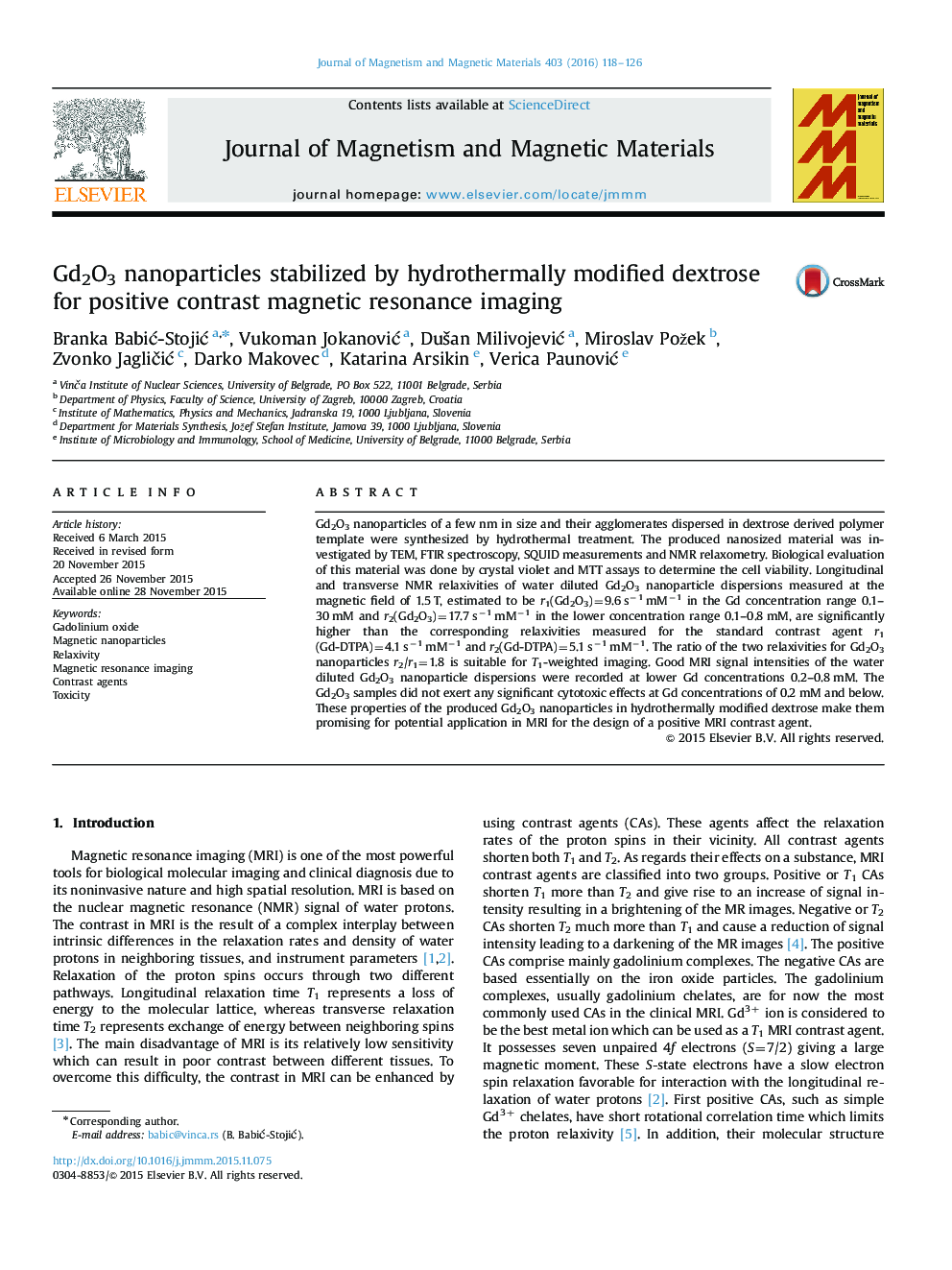| Article ID | Journal | Published Year | Pages | File Type |
|---|---|---|---|---|
| 1798317 | Journal of Magnetism and Magnetic Materials | 2016 | 9 Pages |
Abstract
Gd2O3 nanoparticles of a few nm in size and their agglomerates dispersed in dextrose derived polymer template were synthesized by hydrothermal treatment. The produced nanosized material was investigated by TEM, FTIR spectroscopy, SQUID measurements and NMR relaxometry. Biological evaluation of this material was done by crystal violet and MTT assays to determine the cell viability. Longitudinal and transverse NMR relaxivities of water diluted Gd2O3 nanoparticle dispersions measured at the magnetic field of 1.5Â T, estimated to be r1(Gd2O3)=9.6Â sâ1Â mMâ1 in the Gd concentration range 0.1-30Â mM and r2(Gd2O3)=17.7Â sâ1Â mMâ1 in the lower concentration range 0.1-0.8Â mM, are significantly higher than the corresponding relaxivities measured for the standard contrast agent r1(Gd-DTPA)=4.1Â sâ1Â mMâ1 and r2(Gd-DTPA)=5.1Â sâ1Â mMâ1. The ratio of the two relaxivities for Gd2O3 nanoparticles r2/r1=1.8 is suitable for T1-weighted imaging. Good MRI signal intensities of the water diluted Gd2O3 nanoparticle dispersions were recorded at lower Gd concentrations 0.2-0.8Â mM. The Gd2O3 samples did not exert any significant cytotoxic effects at Gd concentrations of 0.2Â mM and below. These properties of the produced Gd2O3 nanoparticles in hydrothermally modified dextrose make them promising for potential application in MRI for the design of a positive MRI contrast agent.
Keywords
Related Topics
Physical Sciences and Engineering
Physics and Astronomy
Condensed Matter Physics
Authors
Branka BabiÄ-StojiÄ, Vukoman JokanoviÄ, DuÅ¡an MilivojeviÄ, Miroslav Požek, Zvonko JagliÄiÄ, Darko Makovec, Katarina Arsikin, Verica PaunoviÄ,
